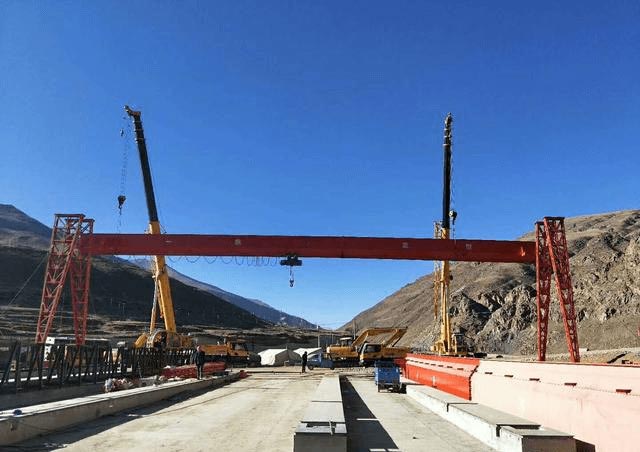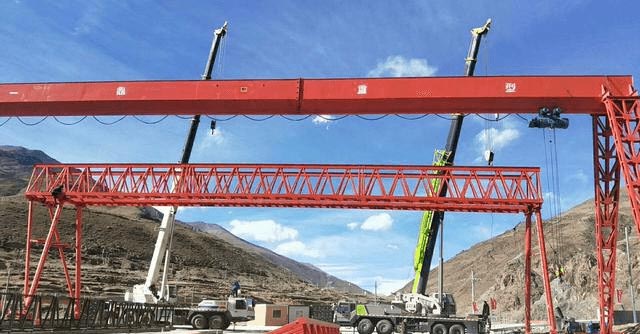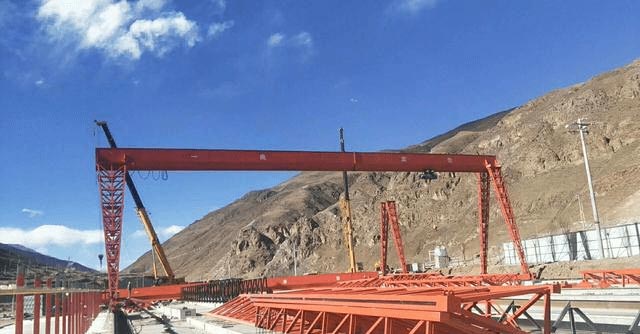Generally, for the overhead cranes, gantry cranes, or any other cranes, after finishing the production, the crane inspection department will inspect the crane strictly. And only passed the test can be delivered to the clients to guarantee the product quality, and we will also provide the relative test report for you.
Now, I will introduce the load test scheme of cranes in detail:
1. Various safety devices work reliably and effectively; each mechanism operates normally and brakes are reliable; the control system and electrical control system work normally; cranes and trolleys run along the full length of the track without rail gnawing. The no-load test inspection method of the crane is as follows: after the power is turned on, after the test of each safety device is qualified, the no-load lifting and running test shall be carried out. Check whether there is any abnormality in the operation and control system of each institution.

2. Static load test of cranes: the newly installed, overhauled, and reconstructed cranes should be subjected to a static load test. Lift the rated load, 100-200mm from the ground, gradually load the load to 1.25 times the load, hang in the air for not less than 10 minutes, check the permanent deformation after unloading, and no more permanent deformation after 3 repetitions. At this time, the upper camber of the main girder is >10.7S/1000 (electric single beam, suspension crane >=0.8S/1000), and the upturn degree of the cantilever end is >=0.7L/350 or 0.7L:/350. The crane should not have defects such as cracks, loose connections, and damage to components that affect the performance and safety of the crane. The static load test inspection method is as follows: park the trolley at the mid-span and cantilever end, load the hoisting mechanism at 1.25 times the rated load, and carry out the test and inspection according to the inspection content and requirements. After inspection, the connection of the weight limiter or its action value must be restored.

3. Rated load test electric double-girder bridge cranes, each mechanism is running normally without rail gnawing and the 3-legged phenomenon. The static rigidity requirements are as follows: ≤S/700 for A1-A3 grades; ≤S/800 for A4-A6 grades; ≤S/1000 for A7 grades; cantilever end ≤L1/350 or L2/350. After the test, check that the electric double-girder eot crane should be free of defects such as cracks, loose connections, and damage to components that affect the performance and safety of the crane. The rated load test inspection method is as follows: lifting the rated load, and carrying out the lifting and running linkage test. When the static rigidity is measured, the trolley is located in the middle of the span. From the actual arch value, measure the deflection value of the trolley when the trolley is located in the middle of the span, measure the difference before and after the hoisting with a level or theodolite or an archmeter.
4. This test should be carried out for the newly installed, overhauled, and transformed cranes. Lifting a 1.1-times rated load, according to the working cycle and the allowable power-on duration rate of the motor, carry out the individual and linked tests of lifting, braking, and running of crane and trolley, lasting no less than 1h. The structure and mechanism of the crane should not be damaged, and the connection should not be loose. The dynamic load test inspection method is: lifting 1.1 times the rated load, checking the flexibility of each mechanism of the crane and the reliability of the brake. The test for each working condition shall not be less than 3 times, and the next start shall be carried out after each action is stopped, and attention must be paid to limit the acceleration, deceleration, and speed within the normal working range of the crane. After unloading, check whether there are any abnormal phenomena such as loosening and damage of the mechanism and structural components. After the inspection, the connection of the lifting weight limiter or its action value must be restored.
